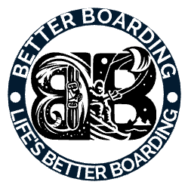
In kiteboarding, the bar and lines are crucial components of the control system that allow the rider to manipulate the kite’s movement. Let me break down the key elements:
- Control Bar:
- The control bar is a horizontal bar that the kiteboarder holds onto while riding.
- It typically has a comfortable grip and is connected to the kite by four lines (two front lines and two back lines).
- Lines:
- Kiteboarding setups commonly use four lines, divided into two pairs: front lines and back lines.
- Front Lines:
- •These are the lines that connect to the front of the kite. They are usually slightly longer than the back lines.
- Back Lines:
- •These are the lines that connect to the back of the kite. They are usually slightly shorter than the front lines.
- Depower System:
- The control bar often features a depower system that allows the rider to adjust the angle of attack of the kite.
- Pulling the bar towards you or pushing it away changes the power of the kite. Pulling in reduces power (depower), while pushing out increases power (power up).
- Chicken Loop:
- The chicken loop is a central part of the control bar and is attached to the harness worn by the kiteboarder.
- It acts as a quick-release safety mechanism. In emergency situations, pulling the chicken loop releases the kite from the rider.
- Safety Leash:
- The safety leash connects the rider to the control bar. It’s an additional safety feature in case the rider needs to detach from the kite quickly.
- Trimming System:
- Some control bars have a trimming system that allows the rider to adjust the length of the back lines, fine-tuning the kite’s performance.
The bar and lines are the primary interface between the kiteboarder and the kite. Proper control and understanding of these components are essential for safe and efficient kiteboarding. Riders use the bar and lines to steer the kite, control its power, and perform various maneuvers on the water.
